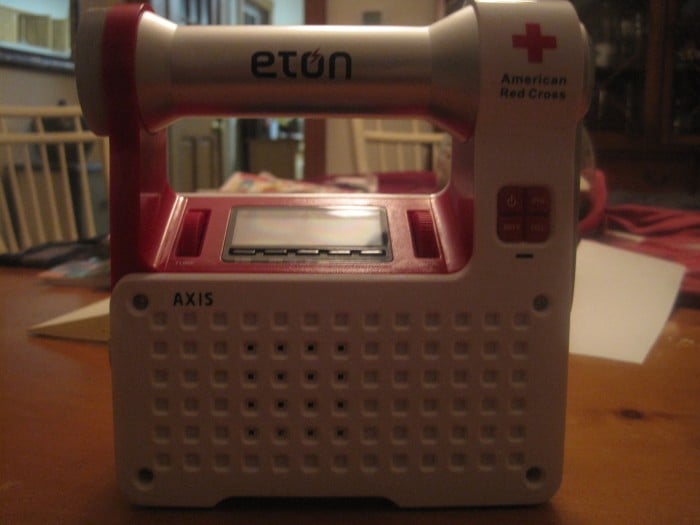
This past year Sarah and I have been very lucky. While our town did flood, it only necessitated the power being out for around 15 hours. Many of my coworkers and friends north of us had it much worse, with power outages lasting anywhere from 24 hours to 5 days! Unfortunately, the modern world isn’t really conducive to going off-grid. Cell phones need juice, you need access to the news, a clock to see what time it is, and of course, an alarm clock if you plan on heading to work!
That’s where having a radio like the Eton Axis comes in! With a radio, NOAA weather bands, alert bands, a clock, flashlight, cell phone charger, and crank charger all rolled into one compact package, is it a must-have for your emergency gear bag? Read on to find out!
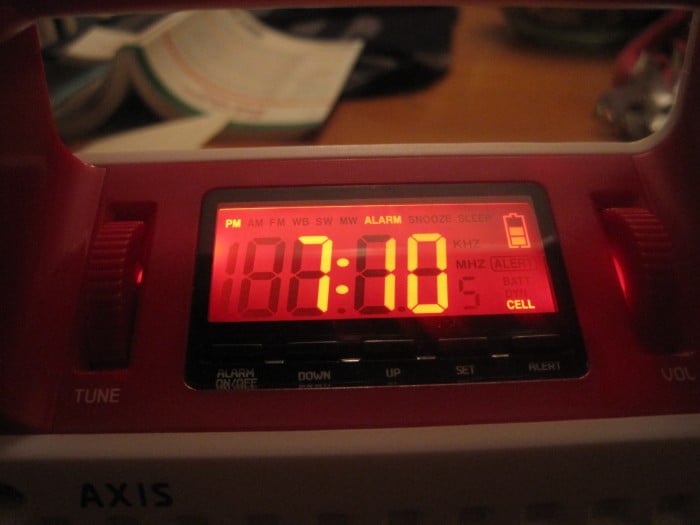
Let’s start with a tour of the hardware because there’s a great deal going on here. The style is red and white, not surprising since this is co-branded with the American Red Cross. Along the left side is the flashlight (which features on, off, and alert settings), as well as the radio tuner to set AM/FM/7 NOAA weather stations. The bottom has two rubber feet for traction, and the right side is the crank handle for manual charging. The back has the battery compartment, two rubbery doors for charging ports and audio jacks, and the radio antenna. On the front, there’s a clock with tuner and volume dials on either side and easy to follow setup buttons underneath the LCD. The power buttons are broken into four areas; power button, dynamo (rechargeable battery and hand crank), battery (the device takes AAAs) and cell (for charging a phone over USB). There’s also a red LED that lights up while it is charging (over USB and while you’re cranking away).
Setting the radio up and using it is a snap. I had no problem getting clear reception on FM and AM stations (including spots in my house where our aging regular radio gets crackly), and the NOAA stations also came through without static. Volume was very good; Sarah was in another room and called out that she could hear the clarity of the radio even on an average volume setting. One of the really cool features is the “alert” option. If the radio is set to a weather channel, you can hit the ALERT button under the clock, which turns off the active radio feed and only kicks back in if, you guessed it, there’s an alert. This is handy for several reasons. One, it highlights important news. If you’re in a blackout or camping in the woods, you need to make sure the really important news is what you catch quickly. Two, it means you don’t have to keep one ear tuned to every weather report in the area to find out the “need to know” information. It’s a great safety feature.
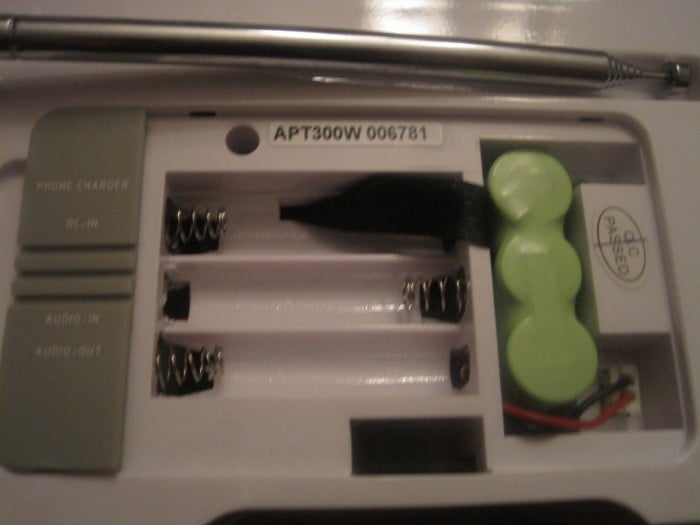
Of course, the radio is handy for other reasons too. As I said above, the sound is nice and clear, and you can use it as an alarm clock as well. Sarah and I have a similar emergency radio device (more on that below) and she has used it on camping trips to keep people entertained during bad weather. Plus you can plug in headphones to listen quietly to the radio without disturbing others.
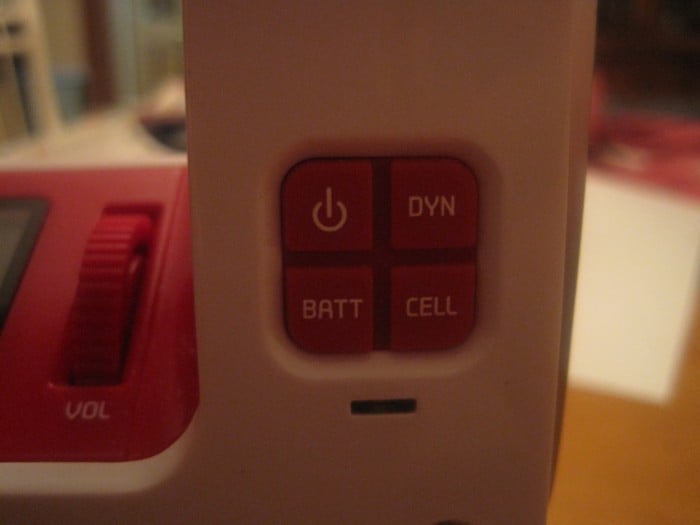
Charging a cell phone is very simple. Plug in the USB, hit the “CELL” button, and the internal battery will work towards powering your cell phone. You cannot charge a cell phone if the internal battery is less than half-full, but you can use the crank to charge your phone if the battery is dead. According to Eton, seven minutes of cranking gets you about five minutes of talk time, enough to make an emergency call at least! I also tested the “CELL” setting with my Mili Power Pack for my iPhone, and it worked on that as well. So with some careful planning and judicious use of the battery, you could theoretically charge a cell phone and a backup battery pack off the Eton Axis. Again, these are great safety features, since it gives you multiple ways to keep devices charged where there is no power, whether that’s a city-wide blackout or camping in the woods.
The flashlight feature is nice, but it’s the one area that feels like a tradeoff to convergence. It’s not the brightest light I’ve seen, though in a very dark area it is adequate. If this is your only flashlight, or you’re looking to keep the devices to a minimum, it’s great to have it, but a Mag-Lite or similar rugged flashlight will obviously offer far more light for the size. I do have a concern that given the weakness of the light, the red emergency flash will only be visible in the deep darkness. At dusk or dawn, the red is not terribly bright, so, again, if that’s a concern a dedicated safety light or flare would be more effective.
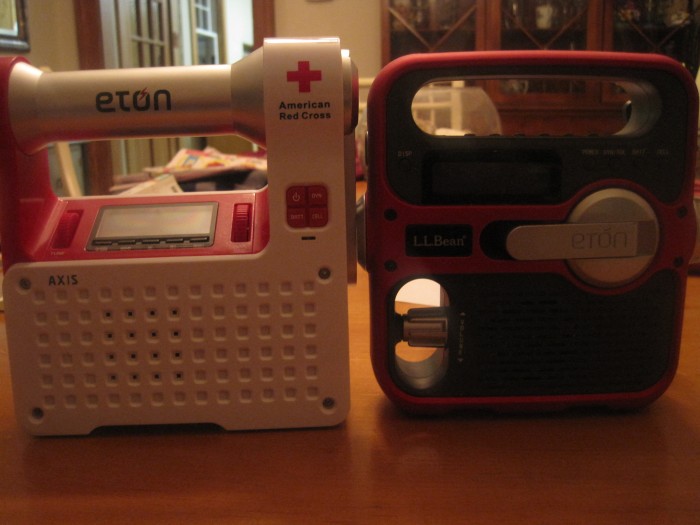
As I mentioned above, Sarah and I have a similar radio. Actually, when I pulled it out of the attic to compare the radios, I discovered ours is also an Eton, but more of a camping-style solar-powered one. The biggest difference, aside from solar power and price, is style. Ours is utilitarian, but not terribly user-friendly. The buttons aren’t as accessible, the crank lever is smaller, and the handle isn’t as ergonomic. Basically, you need a few minutes to acclimate yourself to the radio, and in the dark or in an emergency, there’s going to be some stumbling and fumbling to find the right settings. On the other hand, on the Axis everything is extremely well-marked, the handle is nice and round and easy to hold, and the crank handle is big and very solid but easy to turn. And in an emergency, everything is easy to locate and use. It’s clear the Axis is designed to be a “pick up and go” radio, and it definitely meets that standard!
Overall, I really like the Axis a great deal. It’s stylish, extremely well-built (the crank and carry handle are metal, and the plastic parts don’t creak or have uneven edges), and it pretty much offers a mobile command center in an extremely compact device. The whole device compact and lightweight, making it extremely easy to transport and carry. While yes, it’s a bit pricey at $70, that money buys you peace of mind and communication in an emergency, or while you’re camping, hiking, or “off the grid”. And that is something you can’t put a price on!
MSRP: $70 at your favorite electronics retailer.
What I Like: Easy to use the various features; Reception is crystal clear; Speaker quality is excellent; Multiple charging options and ports make it extremely versatile
What Needs Improvement: The flashlight is weak









You have the EXACT Eton I reviewed earlier.
The old one, not the new.
Too funny! Ours is cobranded with LL Bean. Sarah adores it and takes it every camping trip.
Yeah Eton makes great stuff. All of it has been pretty solid. Much more solid than the Baygen Freeplay we had.
I want to get one of their shortwave receivers.